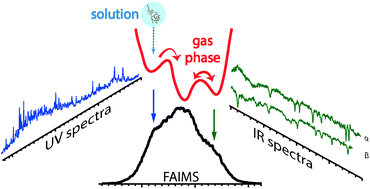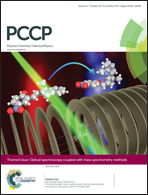Spectroscopic studies of kinetically trapped conformations in the gas phase: the case of triply protonated bradykinin
Abstract
Understanding the relation between the gas-phase structure of biological molecules and their solution-phase structure is important when attempting to use gas-phase techniques to address biologically relevant questions. Directly after electrospray ionization, molecules can be kinetically trapped in a state that retains some “memory” of its conformation in solution and is separated from the lowest-energy gas-phase structure by barriers on the potential energy surface. In order to identify and characterize kinetically trapped structures, we have explored the conformational space of triply protonated bradykinin in the gas phase by combining field-asymmetric ion mobility spectrometry (FAIMS) with cold ion spectroscopy. We isolate three distinct conformational families and characterize them by recording their UV-photofragment spectra and vibrational spectra. Annealing of the initial conformational distribution produced by electrospray reveals that one of the conformational families is kinetically trapped, while two others are stable, gas-phase structures. We compare our results to previously published results obtained using drift-tube ion mobility spectrometry (IMS) and propose a correspondence between the conformational families separated by FAIMS and those by IMS.

- This article is part of the themed collection: Optical spectroscopy coupled with mass spectrometry methods

 Please wait while we load your content...
Please wait while we load your content...